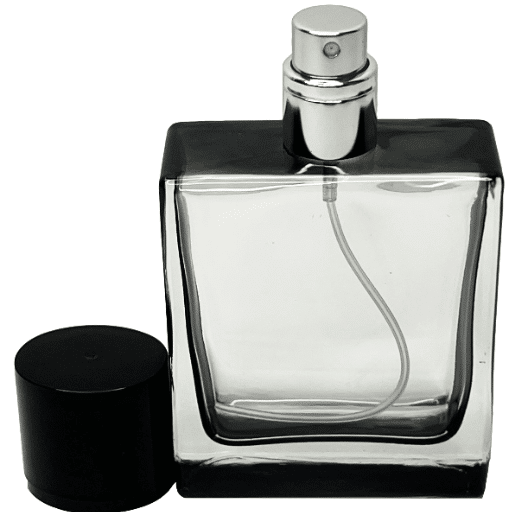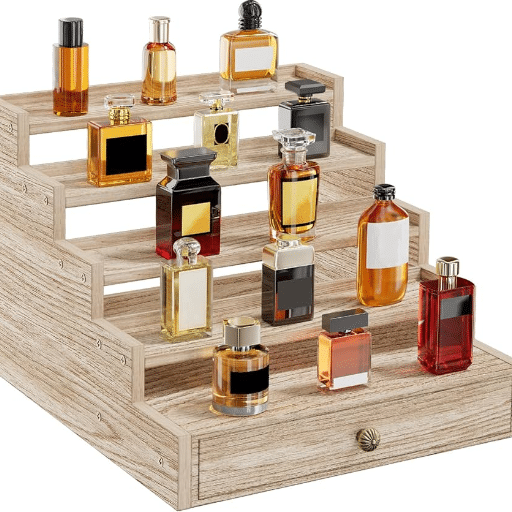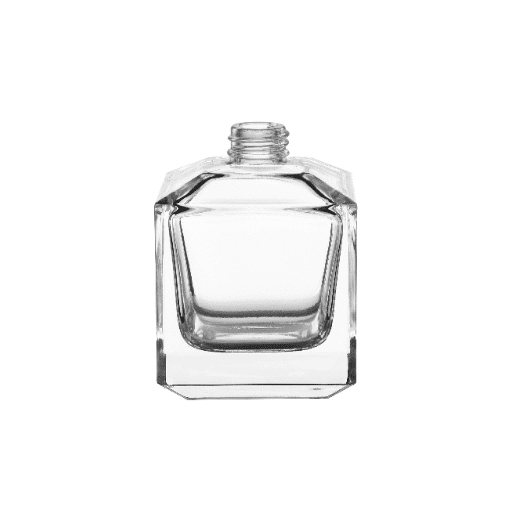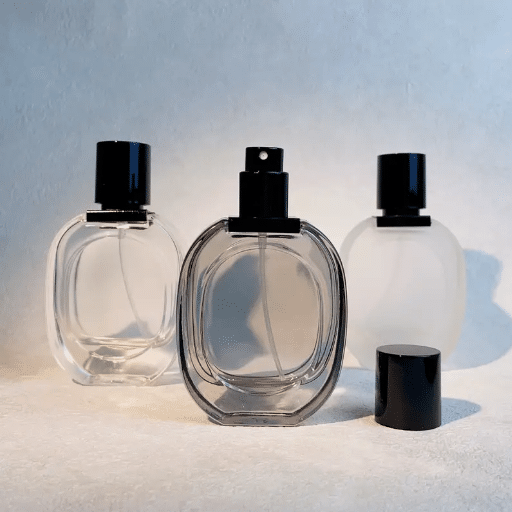The idea of a broken sprayer when one has a very pleasant fragrance for guests can be pretty annoying. Primarily, when the problem is associated with a blocked nozzle, where the disinfectant cannot be dispensed due to clogging, or the entire bottle appears empty even after proper maintenance and preservation. The problem can be easily fixed. Learn about several steps for troubleshooting the cologne sprayer when the fragrance stops evaporating. From the basics of the usual problems to their solutions, we have them all, so you can resume enjoying a scent with every pump.
Understanding Your Perfume Bottle and Sprayer
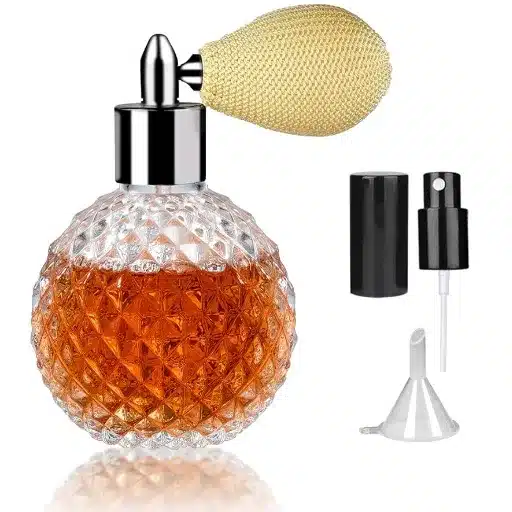
Both perfume bottles and sprayers are manufactured in such a way that fragrance can be ejected in spray form and in an even way. Moreover, the majority of sprayers consist of a nozzle, a tube, and a pump. Problems related to spraying are common and are typically caused by the nozzle being blocked, the tube being out of place, and a few other issues associated with the pump. To ensure the spray’s performance, ensure the nozzle is clean and the tube is filled with liquid. If the pump becomes clogged or loses its ability to pump, care must be taken to apply gentle pressure to clean or refit it. Understanding these constituents might help in the smooth diagnosis and repair of any problem related to the perfume bottle.
Components of a Cologne Bottle
It is common for the design of the bottle to be both complex and creative, while also serving practical purposes. The significant elements may include the bottle, cap, actuator, and occasionally, some more decorative appendages. Many times, the bottle is made from either glass or hard plastic to prevent the smell from evaporating and to make a direct impact at an event. The cover can also serve the same purpose, that is, to keep the product safe, and also to represent the brand. The bottle is presented with a spray mechanism that houses both the nozzle and pump, defined within a tube. While the nozzle applies the cologne evenly in vapor form, the penetrating tube draws up the liquid from a bottle. Complex designs may include additional features, such as mist controllers, which enable further accuracy in usage. These components, when included, not only facilitate the task without any inconvenience but also allow the production of a cologne bottle that utilizes materials and design to enhance its functionality.
How the Nozzle Works
The nozzle plays a key role in ensuring that the smell reaches its destination effectively. It also enhances the sophistication and effectiveness of perfumes when used. A small aperture is present in the nozzle, which regulates the amount of flow, allowing it to emerge in the form of a mist. As the nozzle is pressed, the process allows the liquid perfume to be ejected through this small opening very quickly, all the pressure forcing it to disintegrate into millions of pieces and be channeled into all the corners of the room. Progressive nozzle technology incorporates features of enhanced technology, such as adjustable force and features that prevent clogging of nozzles. These mechanical advancements transform the humble nozzle into a tool that fuses precision with pragmatism. In simple terms, it provides full coverage with every button push.
Common Types of Atomizers
| Type of Atomizer | Key Points | Parameters |
|---|---|---|
| Spray Bottle Atomizer | Common for perfumes and cleaners | Adjustable spray patterns available |
| Nebulizing Atomizer | Ideal for essential oils | No heat or water required |
| Ultrasonic Atomizer | Uses vibrations to create mist | Energy-efficient and quiet |
| Heated Atomizer | Vaporizes liquids with heat | Quick vapor production |
| Compressed Air Atomizer | Combines liquid with high-pressure air | Suitable for industrial use |
| Venturi Atomizer | Mixes liquid with airflow | Compact and efficient design |
| Electrostatic Atomizer | Charges droplets for adequate coverage | High precision spraying |
| Manual Atomizer | Simple design, hand-operated | Affordable and easy to use |
| Portable Atomizer | Compact for travel or personal use | Rechargeable and convenient |
| Atomizing Humidifier | Adds moisture to the air | Often used in homes and offices |
Identifying Issues with Your Cologne Spray
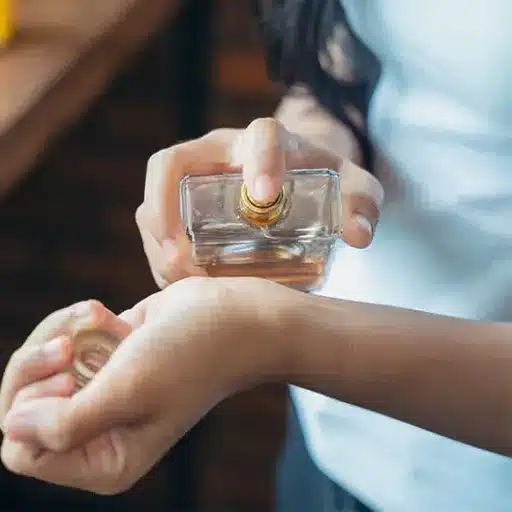
If your cologne spray is not working properly, here are some common problems:
Spray Nozzle Is Clogged
More often than not, the simplest issue is a nozzle that simply refuses to release any liquid content. The most effective and least expensive method to address the problem is to remove the nozzle and wash it in warm water. Once done, a pin can be used to remove the clogs easily, air-dry it thoroughly, and then put it back.
Insufficient Pressure
If the effect of spraying perfume is relatively weak, the vessel might be low on gas. Perform the spraying process only after making the aerosol slightly upright. Lastly, to ensure persistence, check for any leakage cracks in the spray can.
Empty or Low on Cologne
If the bottle does not eject its contents as instructed, it may be nearly empty. A thin beam of light can be shone on the container. Fill or adhere a new container as necessary.
Damaged Pump Mechanism
An extreme case can happen if the spraying device is not functioning correctly. Examine the force or the pushers and look for any visible signs of destruction. A slight chance of saving it exists if it is cracked or broken, and no reaction releases the liquid.
Through the above measures, one can fix such deficiencies for their cologne spray. However, if the problem occurs with the product, it is advisable to contact the manufacturer or their authorized agent, as their warranty terms should guide this process.
Signs of a Broken Nozzle
When it comes to determining if a nozzle on a cologne spray is broken, there are several ways to confirm this. One of the more common ways is by determining irregularly shaped sprays, where the cologne either trickles down or the expected mist is not produced. Another cause could be a total blockage, which prevents even multiple activations from producing a spray. Lastly, one may find prominent features such as cracks or a nozzle that has been deformed. As a matter of course, liquids left on the nozzle tend to solidify, thus preventing the nozzle from being active; hence, it is dysfunctional. Additionally, some problems can be avoided by checking the device periodically; however, in cases where the nozzle appears severely damaged, it’s more effective to install a new one and automatically restore the product’s functionality.
Leaks and Other Common Problems
Leaks are another common issue that can severely affect the performance and functionality of a spray or liquid dispenser. This is oftentimes due to loose couplings, damaged O-rings, or nozzles of both the container and the exit itself. Malfunctions in these systems can also be hazardous, especially for very corrosive or very slip-prone chemically active fluids. In addition to wasting a lot of time, very high viscosity levels may cause safety hazards within the working area. Regular maintenance of seals and mechanical mating surfaces prevents potential weak spots from developing into catastrophic failures. At the same time, clogs may trigger problems such as uneven or low-flow spray, which is primarily the result of filter clogs or a faulty pump assembly. The systems can stop working correctly due to the accumulation of minerals, deposition, or persistent overproduction of layer materials, among other factors. Resolving such issues may also be achieved through the use of products that clean or flush out waste deposits and replace parts that have outlived their useful life. Ways of addressing the problem include creating mechanisms that minimize the risk of clog growth within the machine or increasing the frequency of fluid filter replacement, which is the most cost-effective approach in the long run. Critical factors in strategies, such as utilizing equipment or performing more frequent equipment checks, depend on the importance of the components in determining performance output, regardless of the equipment.
When to Replace vs. Repair
The consideration of whether to buy new equipment or fix the existing equipment hinges on several factors, including the cost, age, and state of the item. In this effect, it is generally cheaper to repair new equipment, especially if the problem requires minimal repair and the parts are locally stocked. It often occurs with vintage equipment, due to wear and tear, where it is more cost-effective to maintain the older equipment despite frequent breakdowns that necessitate additional repairs. When deciding whether to replace or repair worn-out or badly damaged equipment, the so-called 50% rule is often applied: one should replace rather than carry out repairs if these incur costs exceeding 50% of the cost of new equipment and the equipment is about to be discarded anyway. It also makes sense to assess the progress in the field of technology; in some cases, newer versions might be more eco-friendly and operationally more efficient than previous models, while costing less in the totality of ownership than the maintenance programs of old refrigerators, for instance. Several initial audits focusing on performance and energy optimization are necessary.
How to Fix a Broken Perfume Bottle Sprayer
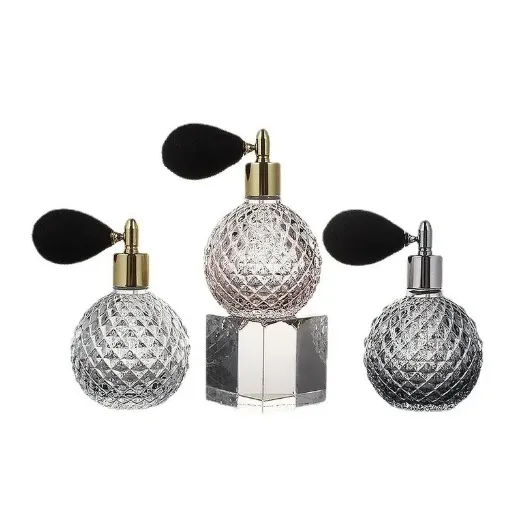
- Check for Blockages: Gently remove the clogged nozzle and submerge it in warm water to clean it. To obtain what you need, you require a thin needle.
- Inspect the Tube: Ensure that the pipe in the bottle is securely connected and that it is not curved or has any visible fractures. Adjust it in its proper position if required.
- Reattach the Sprayer: Attach the nozzle to the bottle and check your sprayer. Still, if the pump doesn’t work, proceed to the next step.
- Replace the Sprayer Nozzle: If the problem persists and cleaning is insufficient, consider purchasing a replacement spray nozzle (available in most beauty stores or online, depending on your convenience) and attaching it to your bottle of perfume.
- Consider Transferring the Perfume: If the container of the perfume has been destroyed, empty the contents into a clean atomizer bottle to continue using the perfume.
Step-by-Step Guide to Repairing the Nozzle
Check for Blockages
Start by examining the nozzle to check if there is any residual material, such as dirt, blocking the spray. Use a skinny needle to clear the dirt easily. Be careful and clear any debris from the nozzle.
Clean the Nozzle Thoroughly
Remove the nozzle and break it apart into pieces. You can then plug these pieces into a container filled with mild, warm, soapy water as a solution to dissolve any dirt. Wash with clean, running water before setting it away to dry. Do not cover the bottle’s nozzle with water.
Inspect the Sprayer Tube
Remove the clogged spray tube and pull it out carefully by the palm of your hand to prevent sugary residue. Then, wash it and squeeze it dry. Ensure that it is not branched or distorted—Coli other originated from an irrigating attachment.
Test the Mechanism
Fit the nozzle back on and pump the sprayer once or twice to check if the flow is okay. In most cases, simply pushing the pump several times can resolve minor issues.
Apply Lubrication for Stuck Nozzles
If the nozzle is tight or not moving, apply a drop of food-grade silicone lubricant at the base of the nozzle to aid its proper function. Be sure not to use a considerable amount, as using more of it may alter the scent or flavor of the perfume in a more complex manner.
Replace Worn-Out Components
If this does not meet the expected results, clean the nozzle and sprayer, and if the issue persists, consider buying a new one. Most beauty shops may have these in stock, but these can also be purchased from various online stores.
Maintain Proper Storage
Lastly, to prevent further nozzle issues, it is highly advisable to keep the perfume bottle(s) in an upright position, away from bright sunlight, as this can cause a reaction that may clog or wear down the perfume burner.
Cleaning the Spray Mechanism
Ensuring that the aerosol mechanism of a perfume bottle is clean is one of the many precautions to take when using a perfume to avoid wasting the lovely scent inside the bottle. The cleaning exercise typically begins by gently removing the nozzle, followed by soaking it in warm, soapy water for approximately 10 to 15 minutes. This step helps remove any solidified perfume that may be clogging the aerosol mechanism. A soft brush should be used to easily remove any dirt that may be present within the opening of the nozzle. If not, one can simply use a toothpick afterward, ensuring that the cleaning does not cause the nozzle to break down. In cases of tough clogs where the aerosol issue is evident, the nozzle will be immersed in the wine for immediate flushing through the spray mechanism. Do not forget to rinse the alcohol thoroughly with water to remove any soapy residue, and remember to dry and store it before use. Cleaning the nozzle helps ensure the proper flow of the spray and helps save liquid, preventing spills everywhere.
Replacing Parts of the Atomizer
Initially, assess if the problem is with the nozzle, the air pump, or the stem that connects the air pump to the liquid in the perfume bottle, and replace the appropriate parts. If the nozzle is damaged or deformed, a corresponding part of the same type and size can be attached by clicking it onto the damaged or deformed part. If the air pump fails and the hand spray pump stops working, you can remove the air pump with your fingers to inspect it for any signs of malfunction. Many stores sell air pump parts, and most of them are compatible with all types of spray bottles. Moreover, likely, the wick stem pulling the scent out of the perfume bottle would stop. If this is the case, try to remove it gently using a pair of tweezers and replace it with a new wick stem that matches the model of the atomizer. Every time you replace or add new pieces, ensure that they are clean and securely fastened to prevent any leakage or drips. By doing so, you will make sure that the operation and general performance of the atomizer are improved.
Alternative Solutions for Spritzing Your Fragrance
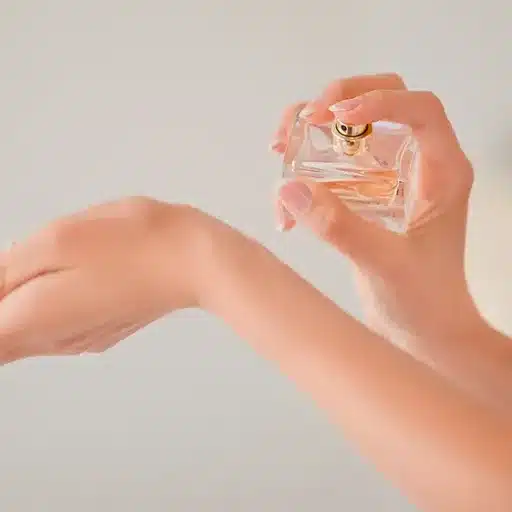
In case it’s not convenient for you to apply perfume the usual way, take note of these application tips:
- Rollerballs: These are designed to apply thin layers of fragrance to pulse points, such as the wrists or neck, without the risk of overapplication. They are small and easy to travel with.
- Solid Perfumes: These are oils mixed with wax bases that are absorbed by the skin through finger application. They are a clean and non-spray option.
- Oil Diffusers: Certain fragrances come in the form of oils that can be used more accurately by dropping. Or even, the oil can be dabbed onto the feet or wrist without any waste.
Here are some ways to enjoy your favourite fragrances without using the traditional spray atomizer.
Transferring to a Glass Container
Decanting your fragrance into a glass bottle is a manageable process, as it enhances the chosen scent. At the beginning of the process, it is best to have a clear glass bottle, preferably with a top or cork to prevent the fragrance from evaporating. To avoid spilling the product or wasting any of it, pour the potion into the chosen glass container through a small funnel. It is observed that very little chemical change occurs in the fragrance stored in glass for an extended period, as glass is an inert material. For optimal results, it is advisable to keep the mister lid or sprayer in a cold, dark, and as far away from light sources and heat as possible, so that the environment does not alter the fragrance’s parameters. This chemical-free methodology allows you to savor your signature fragrance for as long as you never thought possible.
Using a Travel Spray Bottle
Travel blobs are cute, purposeful, and lightweight, carrying one’s favorite fragrance and making them the absolute choice of the traveler. This compact device allows for maintaining perfume for all-day freshness without occupying a massive amount of space in one’s handbag or suitcase. Primarily made d to last and not to be thrown after the product is used in the store, these bottles appeal to many perfumaholics as they are also cost effective. New designs of travel spray bottles have cleverly incorporated 100% reliable leak-proof features, ensuring that not a single drop of the scent seeps through and gets all over you, whether you’re motioning with your hands or any surface for that matter. To make the product even more appealing and functional, some designs incorporate a fine mist feature when spraying, rather than dispensing the liquid excessively. Fortune favors the bold, in that one should not dwell on the most minor details. Yet, the quality of the travel-sized spray bottle should be prioritized over other factors to save more space than carrying a humongous 4-oz bottle of an ape’s organs.
DIY Fixes for Persistent Issues
Be it in the form of chewing gum or the favorite chewing gums, persistent problems are always lurking in the corners of anyone, be it their second name or not, infrequently, their last hold on their mind and body. Leaks occur when the nozzle thread and bottle threads are not joined completely, allowing wetness to start coming out, or when any of the seals become damaged. Component adjustments are a quick-fix solution, as they commonly restore the component to its regular use with normal limits, without any such issues. Clogging of the spray button is usually inevitable, but it can be easily removed and cleaned by either using warm water or dipping it in vinegar. Do you have a problem with the wall affected by the misdirected spray? If so, simply remove the nozzle, look for obstacles, and fix it using a thin pin. Very fundamental changes can substantially extend the durability of an in-flight spray and enable it to operate at its maximum potential.
Maintaining Your Cologne Bottle for Longevity
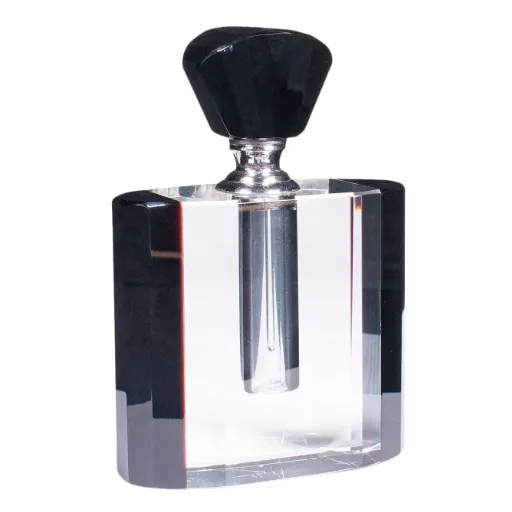
- Store Properly: Always keep a fragrance in its bottle, especially in a perfume bottle, kept in a proper position at a moderate, suitable temperature. It does not mean storing it in the most conducive environment.
- Secure the Cap: Use your lips to close the cap, preventing the fragrance’s evaporation and retaining its scent.
- Clean the Nozzle: Clean the nozzle thoroughly using a dry, clean piece of cloth to prevent residue from building up and causing blockage.
- Avoid Shaking: There is no need to make violent or jerky movements. It is well known that doing so can frequently lead to problems by displacing air, negatively affecting the quality of your perfume.
- Check for Leaks: Regularly check the bottle for any signs of leaking. When the container feels slightly wet or sticky, ensure there are no defects or loose fittings that may compromise the perfume content inside it.
These suggestions will help keep collected fragrances in good condition and for as long as they are used as part of the daily routine.
Best Practices for Storing Your Perfume
Appropriate storage can effectively prolong the life and quality of perfume. Here are some essential tips to keep in mind:
- Avoid Direct Sunlight: Exposing your cologne to the sun for hours should be avoided, as it reduces the quality of the entire perfume when the fragrance notes become disturbed. Keep your perfume in a place that is half exposed to light, as a dark place helps preserve the original scent. In such a case, a cupboard or a wardrobe would be a good option for storing the cologne.
- Maintain a Stable Temperature: Temperature fluctuations in your perfume can have a detrimental impact on the chemical equilibrium. So, keep the work in a leveled temperature, that is between 60-70°F (15-21°C).
- Use Original Packaging: Do not discard the box that holds the perfume; it is designed to protect the perfume from any contact with light or temperature changes. An additional bonus of safety is the preservation of the original container as well.
- Secure the Cap Properly: Never leave the bottle without the lid; the liquid will definitely be completely used up. Constantly and thoroughly fidget with the lid for recording and transportation.
- Keep It Away From Humidity: Bathrooms are often associated with perfumes, but the heavy steam tends to dissipate the scent. Use places that are not humid for storage.
- Minimize Shaking: Unnecessary shaking of the perfume bottle can introduce air bubbles that, when the scents come into contact with these bubbles, can alter or influence the fragrance’s scent.
These practices, as presented above, can be incorporated to extend the beauty of your fragrance for weeks. As a result, each time you use your fragrance, it will be at its best.
Preventative Measures for the Nozzle
It is essential to perform regular maintenance to ensure the perfume sprayer remains functional in the long term. Firstly, the user should ensure that the nozzle of the perfume is clean and free from residues. If not, the fragrance tube will be affected by soiling, and even if the soiling is not severe, it will not function properly. Finally, gently clean any trace of dirt on the nozzle using a soft, wet cloth, as the build-up will soften in warm water. Additionally, every time you use the product, cover the nozzle by placing the cap on it to prevent dust or extraneous materials from damaging the mechanism. Especially during trips, if you bring along a bottle of perfume, put it in a box to even protect the nozzle from the squeezing that may cause it to leak or break. Slightly more sophisticated adaptations, such as those mentioned earlier, will also make it easy for you to use and administer the perfume correctly.
Reference Sources
-
How to Fix a Perfume Bottle That Won’t Spray: Easy Solutions
- Summary: This article provides multiple solutions, such as using a needle or hot water to unclog the nozzle. It also recommends shaking or turning the bottle to adjust internal pressure. The first step is always to check for a clogged nozzle.
Frequently Asked Questions (FAQs)
Q: What should I do if I lose the nozzle on my cologne spray?
A: As unfavorable as it might be to lose the sprayer head, one could do certain things to ameliorate this. Begin by looking through dollar and perfume stores for on-spot replacement nozzles in one of the spray bottles you find. If you own a similar bottle, you can likely use the nozzle for that specific product. However, if the container is not entirely damaged, one may wish to use the perfume in another bottle. Yet, take heed to wash the fresh bottle properly to prevent fragrance blending.
Q: How do I fix a broken perfume nozzle?
A: In the situation of a spoilage in the perfume nozzle, hold in hand a pair of pliers, unscrew gently from the bottle neck, holding the nozzle. Following this, a further examination of the nozzle is conducted to identify any possible defects that may have been caused during the breakage. However, if the nozzle is just blocked, it can be cleared by washing it in hot water or a diluted solution of white vinegar. If that nozzle is difficult to fix, many organizations that are free from scratches and other dents may provide an online platform where it can be replaced. Additionally, before finishing, remember to confirm that the new nozzle is securely in place, which will enhance the efficiency of the perfume spray at that moment.
Q: Can I unclog a clogged perfume spray nozzle?
A: Sure, there are some readily available methods for solving congested nozzles by unclogging perfume in a bottle. Firstly, remove the nozzle; then hold the sprayer down and let it soak in hot, running water for a few minutes. This will help to melt any perfume essence that is causing the blockage. Other tricks include using a fine needle for removing persistent areas. Whether the needle is in place or submerged, sometimes it still blocks. This is where replacing the glass that contains the cordless nozzle becomes helpful.
Q: What to do if my cologne bottle isn’t spraying anymore?
A: It won’t come as a surprise if you notice your perfume bottle has suddenly stopped operating or spraying the perfume. If it is the case, the nozzle is no longer functional; the simplest check is to see if the nozzle is obstructed. The problem can be resolved by submerging the nozzle in boiling water or using a needle as an instrument to clear the blockage. In some cases, the interior of the central unit may be compromised, particularly when the container has been dropped. At times, it’s mandatory to dismantle the deodorant bottle. Finally, if all attempts are in vain, transferring the liquid into another container is definitely permissible.

